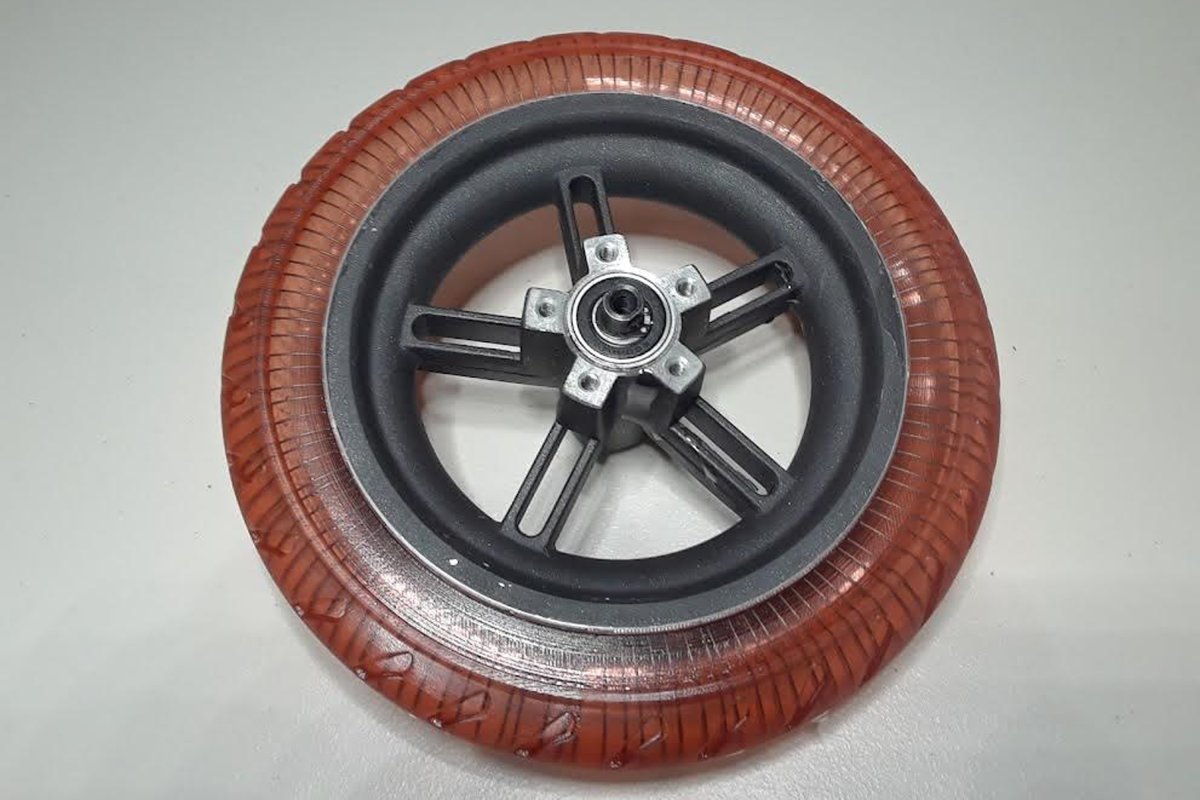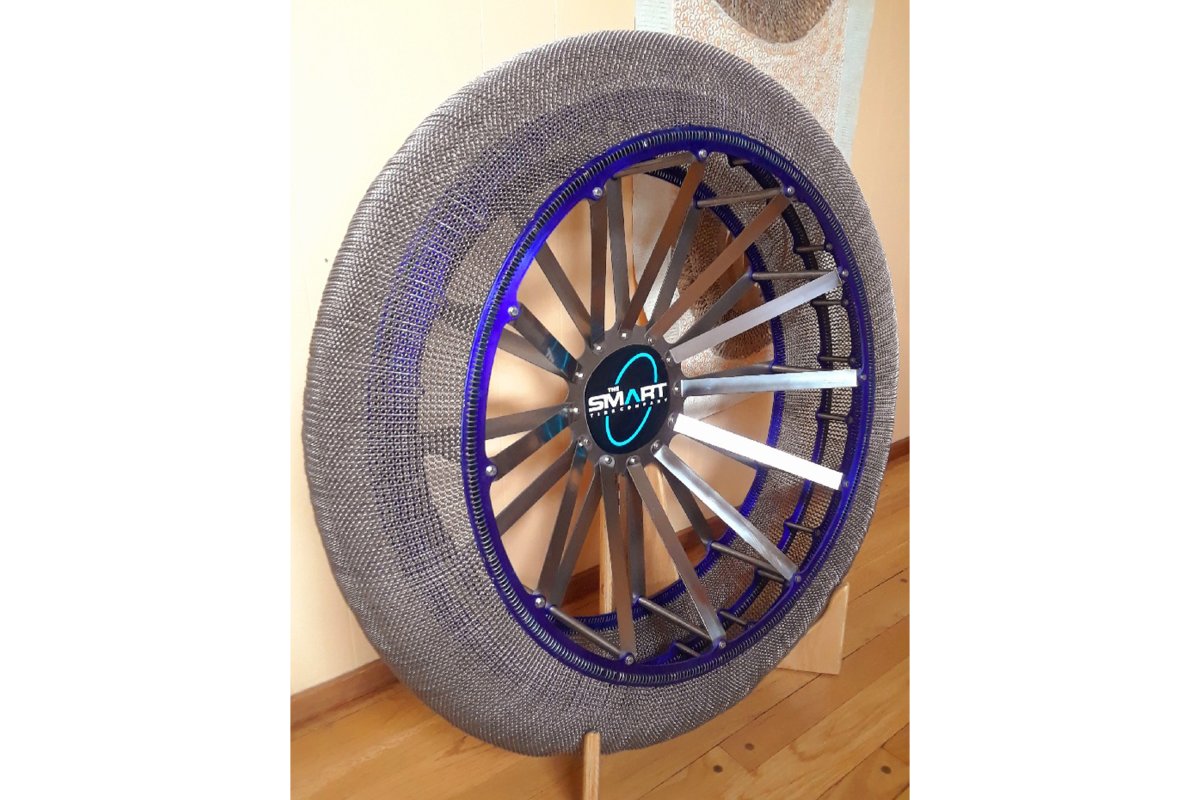The first pneumatic (air-filled) tire was installed on a Mercedes-Benz in the late 1800s. Tire treads came next, then synthetic rubber, then tubeless tires. The radial tire was invented in the 1950s and the run-flat around 1979. Since then, compound formulas have changed, but there have been no major, mass production leaps forward.
Because tires are the only part of a vehicle that comes in contact with the road, they're crucial for safety and control. None of the inputs from brakes, steering wheel or throttle will matter if those four, palm-sized tire contact patches aren't touching the ground.
When the patches make contact with the ground, they degrade a little at a time, leaving particles to be carried from the roadway and into the surrounding environment, or carried through the air. These compounds can leach toxic chemicals into the environment and be breathed in by humans and animals, a report from the Imperial College London's Transition to Zero Pollution collective warned earlier this year.
Tires are a significant source of microplastics, small bits of plastic generally undetectable to the human eye, which remain in ecosystems and take extended periods of time to break down. They can also make their way into human and animal bloodstreams and have been found in the depths of the ocean and on mountaintops.

Many tiremakers, including Michelin, are committed to lessening their environmental footprint. The SMART Tire Company takes that ethos a step further. They have made a tire with a metal skeleton of shape memory alloys (SMAs) created from nickel and titanium (NiTinol).
The properties of the combined metals were discovered at the Naval Ordinance Laboratory about 15 years ago. SMAs display a stretchy and bouncy effect when they are deformed. When stress is applied, the deformation causes a phase transformation. When the applied force is removed, the material immediately springs back to its tire-like shape.
They were originally created for interplanetary rovers and the conditions they encounter on Mars and the moon.
"NASA Glenn Research Center's current generation rover tire program is about 15 years old, as is their shape memory alloy development. The two programs converged more recently as part of the Mars Fetch Rover program, around 2015," Brian Yennie, founder and Chief Technology Officer at the SMART Tire Company, told Newsweek.
"SMART Tire was founded in 2020 with the mission of commercializing the technology. My co-founder Earl Cole and I were part of the NASA Startup Studio before forming the company. We won the pitch contest and successfully licensed the tech from NASA, but have since patented new SMA tire inventions."

The tech has been tested extensively in simulated Martian and Lunar environments at NASA, and there are several rover projects targeting moon landings in the next couple of years, some of which SMART is working with.
SMART is also working on an LTV team (Lunar Terrain Vehicle) with Leidos and NASCAR. LTV is slated to transport astronauts on the moon as part of NASA's Artemis project in the late 2020s, which will land the first woman and first person of color on the moon, explore more of the lunar surface than ever before and eventually establish a long-term presence on the moon.
In the promotional videos above, the tire is shown as bare metal on simulated surfaces. But when these tires make it to consumers, they'll look and feel a lot more like traditional tires, with a rubber tread patch and a metal structure acting as the inner skeleton that provides all of the structure and shape normally provided by air pressure.
"Where the rubber hits the road, will remain rubber," Yennie said over email.

About 6.1 million metric tons of tire dust (rubber particles that are ground off of tires during daily use) end up in our atmosphere and waterways annually, making it one of the most common pollutants. The SMART Tires use 50 percent less rubber than a traditional tire.
"They will emit rubber particles just like a conventional tire would; however, it will be less. This is because we have a more consistent footprint/contact patch than an inflated tire. Also, there is future potential to design a larger overall footprint, which means lower ground pressures. The combined effects lead to less tire wear," Yennie wrote in an email.
The tires weigh a little less than conventional tires, and have very low rolling resistance, which translates to energy efficiency and increased range. Yennie says the greatest benefits will be in long haul trucking because an airless tire allows them to switch from 16 trailer tires to eight wider ones. Wide tires get better fuel economy but are not often used in trucking because redundancy for punctured tires is a higher priority.
The grip is better than regular tires, too, says SMART, because the tires are always perfectly shaped, never under-inflated and wear more evenly. They will be taking harder blows here than on the Martian surface, where speeds reach about 0.1 miles per hour (mph). But the metal tires should perform better at speed than they would when moving more slowly, as the material isn't being held under stress for a long period of time.

"The secret sauce with a shape memory alloy is that when you bend it, it actually goes through a phase transformation in the material, which is totally wild when you think about it. Water to ice (liquid to solid) is a phase transformation, but in this case it's a solid-to-solid change invisible to the naked eye, and it's practically instantaneous since it's happening at the atomic level. The exact ingredient needed is the force being placed on the bottom of the tire, and then releasing that force," Yennie explained.
"When your tire takes that blow, it deforms exactly like an ordinary tire. Internally, all that shock (energy) is transforming the material. Then, as soon as the force is released (the tire rotates), it perfectly and efficiently regains its original shape. As a bonus, it's an excellent dampening material, so not a lot of the shock is transferred to your wheel."
The tires can also be adapted to suit both sports cars and off-road vehicles, to accommodate travel on typical roads, marked by potholes and bumps, or on rockier terrain.
"The reason it hasn't happened before, is because all tire companies are also rubber companies, and newer materials (SMAs) needed to mature to make it possible," Yennie wrote to Newsweek. "It's been so long that most people just assume compressed air and rubber is unbeatable. It's not."
About the writer
Jake Lingeman is the Managing Editor for the Autos team at Newsweek. He has previously worked for Autoweek, The Detroit ... Read more
To read how Newsweek uses AI as a newsroom tool, Click here.





